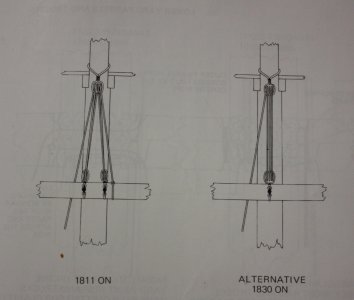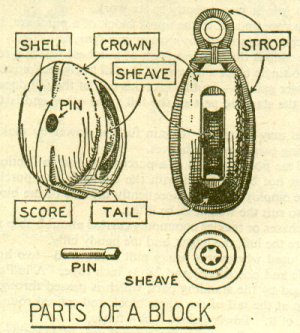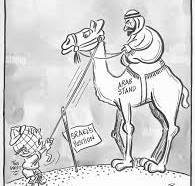Hi Thomas, Yes I have bought a few from eBay and have used them successfully as well as some of the other things that have been suggested on this thread. ThanksThis is a good practice--also gets any fuzz off the lines.
BTW, definitely try one of those needle threaders people have mentioned. You will be amazed how well they work.
And always a good idea to give the holes a little drill out to make sure they aren't blocked!Hi Thomas, Yes I have bought a few from eBay and have used them successfully as well as some of the other things that have been suggested on this thread. Thanks
Thanks, I picked that point up as well from earlier posts and have enlarged all the holes in all the blocks and pushed a needle through to make sure they are clear.And always a good idea to give the holes a little drill out to make sure they aren't blocked!
This forum is so helpful and I am very grateful as its a fabulous hobby
- Joined
- Apr 3, 2023
- Messages
- 199
- Points
- 113

FWIW, I've used needle threaders for decades, and I've only experienced breakage of one or two small blocks in all that time. I even purchased a set or rigging tools... which were basically 30cm (one foot) long wooden dowels with various metal tips glued into the ends of them. Many were darning needles that had the eyes cut or reshaped under heat to provide a variety of hooking and grabbing tips... but one of them was basically the thin wire from a needle threader epoxied into a hole drilled into the end of a dowel. I use the clamping hemostats as well, but for a slightly different purpose. I may use them to lightly hold a block steady as I'm running a line through it, but what I use them for quite frequently is to provide a weight to the end of a line that's been run through a block to keep light tension on it while I'm getting ready to run the end of that line through another block or fitting.
I really like the looks of what you've completed so far... really nice, so suffice it to say, "keep up the good work!".
I really like the looks of what you've completed so far... really nice, so suffice it to say, "keep up the good work!".
- Joined
- Jun 18, 2024
- Messages
- 17
- Points
- 48

Look up beading needles on Amazon. That’s what I use.
- Joined
- Jul 6, 2021
- Messages
- 8
- Points
- 23

I like Amati (Victory) models but I've seen various people argue their corners for different makers. When you know what you want to build next find somebody's build log and read it as they will normally mention the quality of the instructions and also of the components.Hi Leonard, Thanks for your comments, I agree with your comment re OcCre instructions, what manufacturer would you suggest. What are Artesania Latina like as I was thinking about building their HMS Supply and their Sopwith Camel biplane. Yes I know a Sopwith Camel is not a ship but I would like to build both at the same time.
So Artesania Latinas instructions any good ?
Oh a couple more pics of the build so far.
View attachment 509134
View attachment 509135
View attachment 509136
View attachment 509137
Great photos of a well organised work bench and a very well made kit too.
- Joined
- Nov 30, 2024
- Messages
- 2
- Points
- 0
DennisP here. I'll say hello and mention some interesting parallels...... I'm also new to the hobby with first build the same OcCre "Polstar". I learned a lot about techniques I've never used before: weathering wood, when best to use better quality items, copper plates on the hull with patina, and fine steel wool to imitate wear. A wonderful kit to get exposed to the hobby. English heritage .........Thanks, I picked that point up as well from earlier posts and have enlarged all the holes in all the blocks and pushed a needle through to make sure they are clear.
This forum is so helpful and I am very grateful as its a fabulous hobby
Presently building the Brigantine Phoenix. Beautiful quality materials, but difficult instructions.
This forum for guidance and visual build logs has been critical. (Moreplovic and just discovered PaulB) you're a lifeline.
This is my first comments effort but you drew me out...... with similar hobby, concerns, name, build experience, England.
Nice to meet you. Many enjoyable moments to come
Dennis Potter
Hello KorsanExpiry date of the CA (my experience 4-6 months stored in room temperature) is important.When it starts being viscous do not use. One should not use gel type for stiftening the threadends because gel does not diffuse well as the liquid ones.Another important point is do not inhalate use a mask and if possible use in open air or a good ventilated room.If one is is allergic your nose starts to run and eyes irritation may occur. As long as possible I use another glue type pva or uhu hart but in some modeling phases that damned ca glue is inavoidable
I keep CA Glue in the fridge and it lasts for years. I have some bottles that are over 10 years old and still quite strong.
Try it if you can keep the admiral from throwing it out. I put them in a zip lock bag and she is ok with that..
Robert
Sorry for a naive question but I am a true beginner. I bought a set of blocks from HiS Model and they have one pair of shear holes on single blockas and two pairs on double blocks. I believe this is standard, but I am confused: why I need a pairs of holes but just one? I have not found any example where the rope was thread trough both shear holes, it seems that only one is used?
There a very extensive youtube video on building the Occre Santisima Trinidad, including lots of rigging techniques. There's approx. 100 video parts, so you'll need to look through the list , rigging starts around part 60 odd, very detailed.
There are many occasions when double and triple blocks are called for in order to increase mechanical advantage (such for lifting heavy objects), and they will typically be used in pairs such that the same rope passes through each block more than once.Sorry for a naive question but I am a true beginner. I bought a set of blocks from HiS Model and they have one pair of shear holes on single blockas and two pairs on double blocks. I believe this is standard, but I am confused: why I need a pairs of holes but just one? I have not found any example where the rope was thread trough both shear holes, it seems that only one is used?
As explained above it is about gaining mechanical advantage. Triple blocks increase it even more. The downside is you have to pull more rope to gain the same distance. The sketch below is from James Lees' Masting and Rigging English Ships of War. There were variations with the era so the set ups in the sketch below are not necessarily correct for earlier centuries.I am confused: why I need a pairs of holes but just one?
Allan

When using sewing thread I prefer one that is about 75 % polyester
and 25 % cotton , the thread before using is then beeswaed , holes in
blocks are then reamed a bit , end of thread cut at a forty five degree angle ,
then if really necessary a bit of CA glue on the end being inserted ,
thus far over the years this routine has worked wonders for me.
and 25 % cotton , the thread before using is then beeswaed , holes in
blocks are then reamed a bit , end of thread cut at a forty five degree angle ,
then if really necessary a bit of CA glue on the end being inserted ,
thus far over the years this routine has worked wonders for me.
Thank you very much, I have not found an answer to my question yet, but all these details are very helpfulThere a very extensive youtube video on building the Occre Santisima Trinidad, including lots of rigging techniques. There's approx. 100 video parts, so you'll need to look through the list , rigging starts around part 60 odd, very detailed.
Thank you for the reply and the picture. It is a very good example to reiterate my question. I am not asking why use double blocks or triple blocks (I know), but I do not understand why on a SINGLE block there are two shear holes, but not one. On your picture it seems that the triple blocks only have three holes and the rigging goes through one of them at a time, from forward to backside of the block. But my triple blocks have SIX holes (three pairs in longitudinal direction ).As explained above it is about gaining mechanical advantage. Triple blocks increase it even more. The downside is you have to pull more rope to gain the same distance. The sketch below is from James Lees' Masting and Rigging English Ships of War. There were variations with the era so the set ups in the sketch below are not necessarily correct for earlier centuries.
Allan
View attachment 509487
Naively I would think this means that I have to thread the rope to the backside and back forward, but then the orientation of the block becomes awkward.
So I am still confused. You can see the blocks I am speaking of at https://www.hismodel.com/en/halcon-1840--1-100-sada--cnc-orechovych-kladek/
(Top left on the picture). Their quality is actually quite good.
- Joined
- Jun 29, 2024
- Messages
- 651
- Points
- 298

The two holes in a single sheave block are the kit manufacturers attempt to simulate the sheave within the block’s wooden shell. For the purpose of rigging your model you can ignore the second hole.
Roger
Roger
Maybe the below will be helpful. There are no holes in a real block, but rather, for a single block there is one slot for the sheave and it is located so the line can pass over the sheave. As Roger explains, at our most common scales, a single hole is usually fine as the rigged line would block out a view of the opening between the tail piece and sheave. Just be sure the hole is at the crown end. A lot of build logs show the blocks upside down with the hole between the would-be tail piece and sheave rather than under the crown and over the sheave which would not work.SINGLE block there are two shear holes, but not one
Allan

Thank you, I got the pointThe two holes in a single sheave block are the kit manufacturers attempt to simulate the sheave within the block’s wooden shell. For the purpose of rigging your model you can ignore the second hole.
Roger




